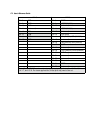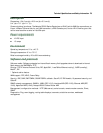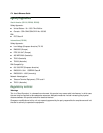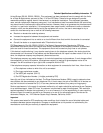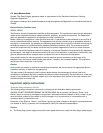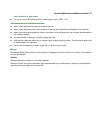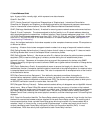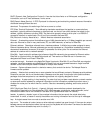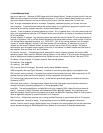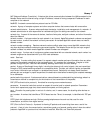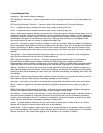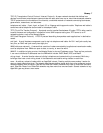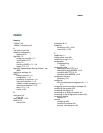2 User’s Reference Guide
byte: A group of bits, normally eight, which represent one data character.
CallerID: See CND.
CCITT (Comite Consultatif International Telegraphique et Telephonique): International Consultative
Committee for Telegraphy and Telephony, a standards organization that devises and proposes recommenda-
tions for international communications. See also ANSI (American National Standards Institute).
CHAP (Challenge Handshake Protocol): A method for ensuring secure network access and communications.
Class A, B, and C networks: The values assigned to the first few bits in an IP network address determine
which class designation the network has. In decimal notation, Class A network addresses range from 1.X.X.X to
126.X.X.X, Class B network addresses range from 128.1.X.X to 191.254.X.X, and Class C addresses range
from 192.0.1.X to 223.255.254.X. For more information on IP network address classes, see Appendix B,
“Understanding IP Addressing.”
client: An intelligent workstation that makes requests to other computers known as servers. PC computers on
a LAN can be clients.
clustering: A feature that clusters remapped network numbers into a range of sequential network numbers.
CNA (Calling Number Authentication): A security feature that will reject an incoming call if it does not match
the Calling Number field in one of the Netopia Router’s connection profiles.
CND (Calling Number Delivery): Also known as caller ID, a feature that allows the called customer premises
equipment (CPE) to receive a calling party’s directory number during the call establishment phase.
community strings: Sequences of characters that serve much like passwords for devices using SNMP.
Different community strings may be used to allow an SNMP user to gather device information or change device
configurations.
CRC (Cyclic Redundancy Check): A computational means to ensure the integrity of a block of data. The
mathematical function is computed, before the data is transmitted at the originating device. Its numerical value
is computed based on the content of the data. This value is compared with a recomputed value of the function
at the destination device.
DCE (Data Communications Equipment): Term defined by standards committees that applies to
communications equipment, typically modems or printers, as distinct from other devices that attach to the
network, typically personal computers or data terminals (DTE). The distinction generally refers to which pins in
an RS-232-C connection transmit or receive data. Also see DTE.
DDP (Datagram Delivery Protocol): Defines socket-to-socket delivery of datagrams over an AppleTalk internet.
default zone: When a Phase II EtherTalk network includes more than one zone, all routers on that network
must be configured to assign one of these zones as a default zone. The default zone is temporarily assigned to
any Phase II EtherTalk node that hasn’t chosen a zone. The user may choose another zone by opening the
Network Control Panel, selecting the correct physical connection, and then choosing a zone in the scrolling field
displayed.
DLCI: Data Link Connection Identifier. The Frame Relay network provides a number of virtual circuits that form
the basis for connections between stations attached to the same Frame Relay network. The resulting set of
interconnected devices forms a private Frame Relay group which may be either fully interconnected with a
complete "mesh" of virtual circuits, or only partially interconnected. In either case, each virtual circuit is
uniquely identified at each Frame Relay interface by a Data Link Connection Identifier (DLCI). In most
circumstances, DLCIs have strictly local significance at each Frame Relay interface.



